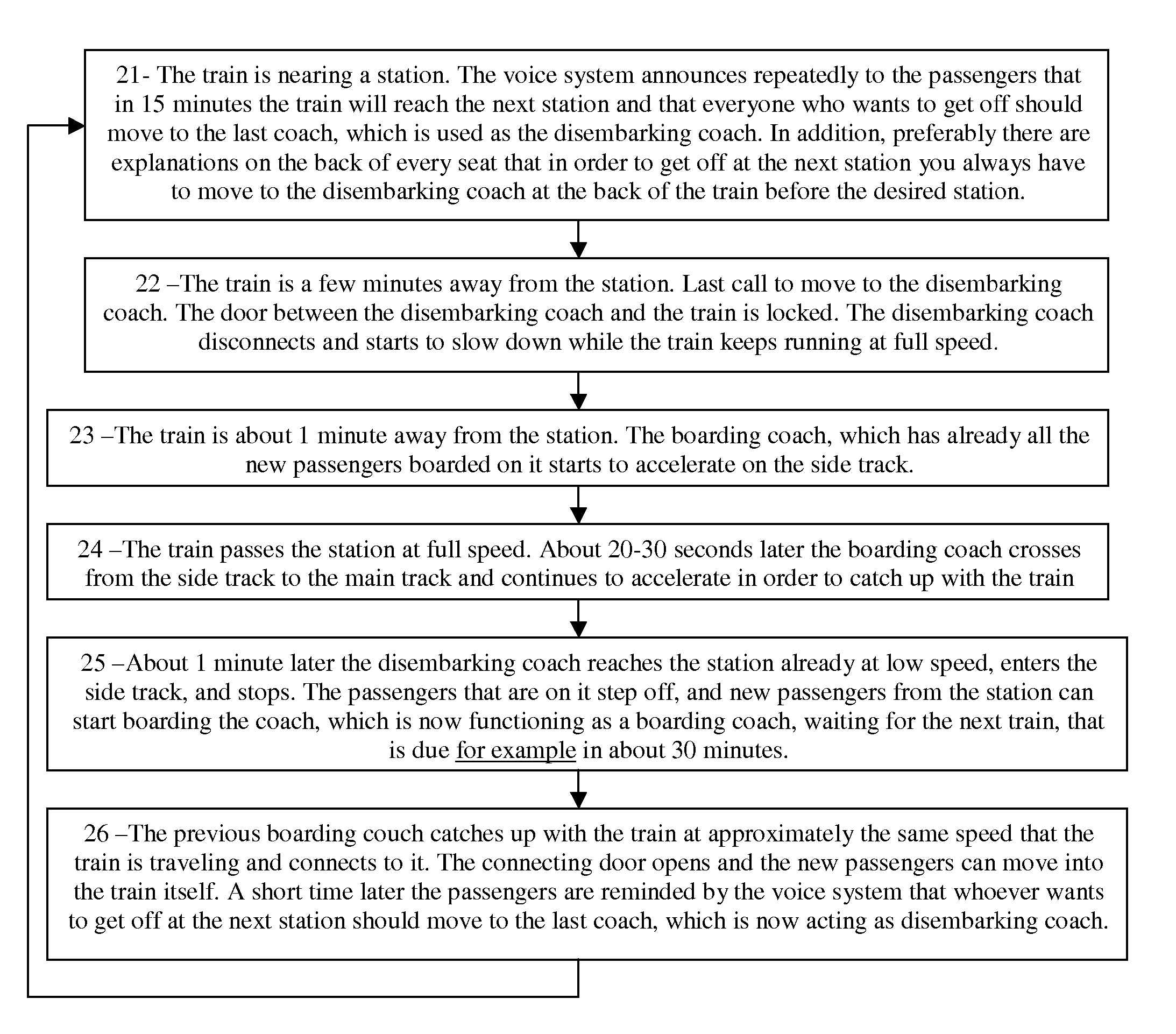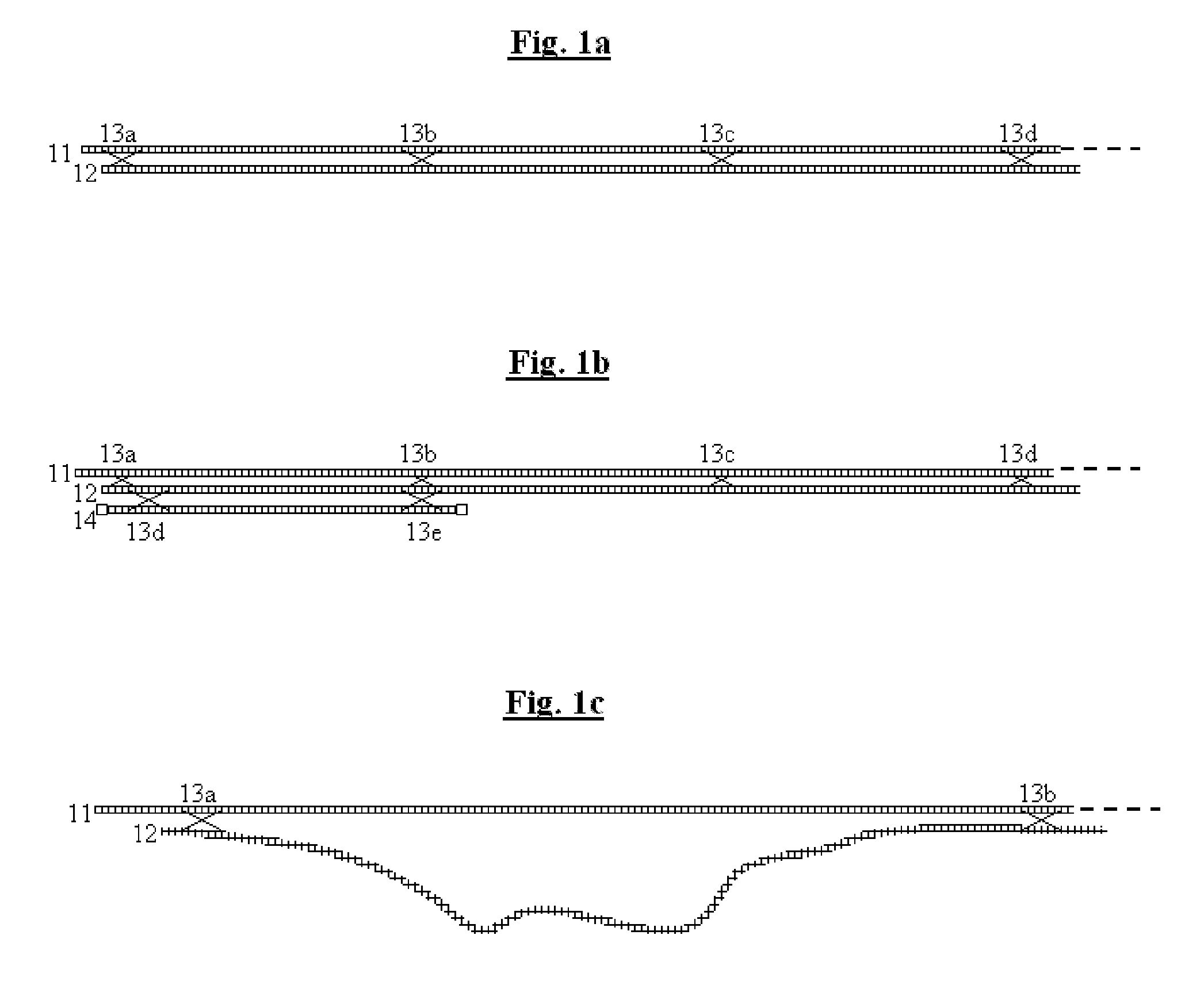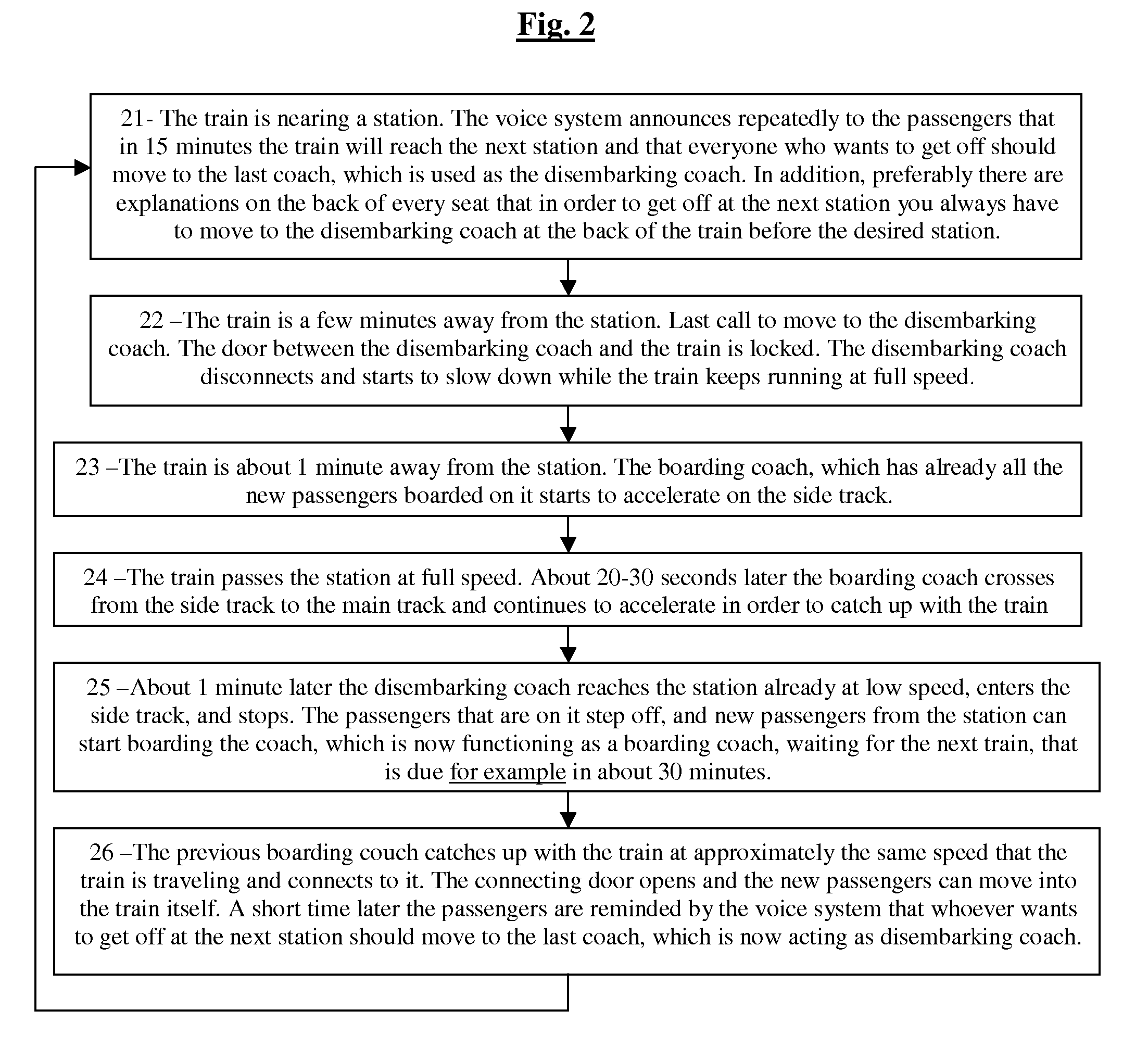System and method for boarding and letting off passengers in trains efficiently so that the train does not have to stop at the stations
a technology for letting off passengers and trains, applied in the field of trains, can solve the problems of more time lost, limited usefulness, and devices with limited nature, and achieve the effect of saving manpower and time, and saving a lot of energy
- Summary
- Abstract
- Description
- Claims
- Application Information
AI Technical Summary
Benefits of technology
Problems solved by technology
Method used
Image
Examples
Embodiment Construction
[0033] All of descriptions in this and other sections are intended to be illustrative examples and not limiting.
[0034] Referring to FIGS. 1a-c we show illustrations of a few possible configurations of the side tracks. In FIG. 1a there is a main track (11) and a side-track (12), preferably at least a few miles long, and there are preferably at least a few crossing points (13a-13d) between the side track and the main track, so that if for example the boarding coach reaches a crossing point and the express train has not yet finished passing by on the main track, the boarding coach can preferably slow down a little and catch up with the train after the next crossing point. This means that preferably the driver of the boarding coach can by remote control directly switch any of the crossing points into the desired state according to the need (instead of depending for example on a controller in the station) and / or preferably this is controlled also instead or in addition by computer autom...
PUM
 Login to View More
Login to View More Abstract
Description
Claims
Application Information
 Login to View More
Login to View More - R&D
- Intellectual Property
- Life Sciences
- Materials
- Tech Scout
- Unparalleled Data Quality
- Higher Quality Content
- 60% Fewer Hallucinations
Browse by: Latest US Patents, China's latest patents, Technical Efficacy Thesaurus, Application Domain, Technology Topic, Popular Technical Reports.
© 2025 PatSnap. All rights reserved.Legal|Privacy policy|Modern Slavery Act Transparency Statement|Sitemap|About US| Contact US: help@patsnap.com



